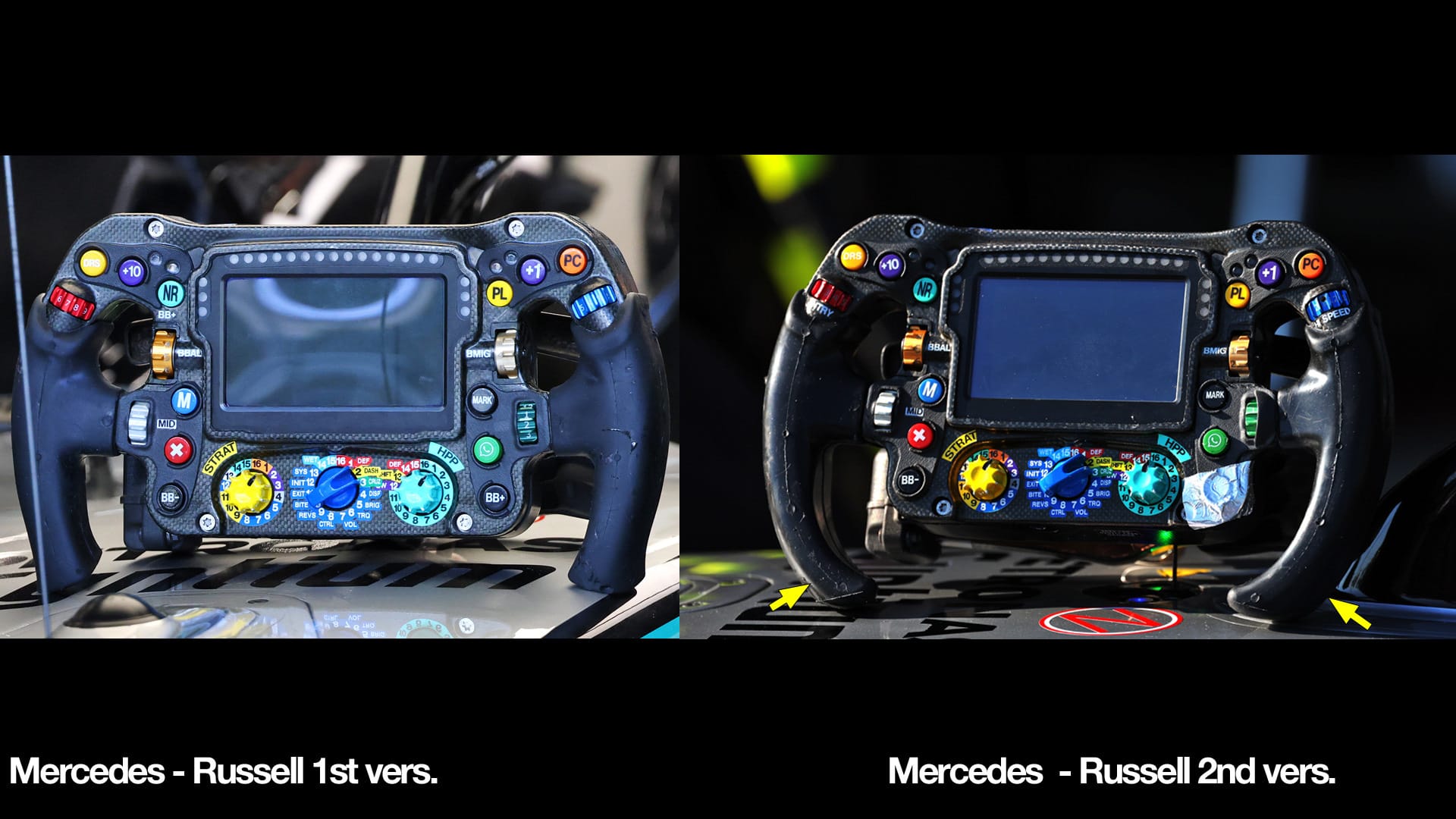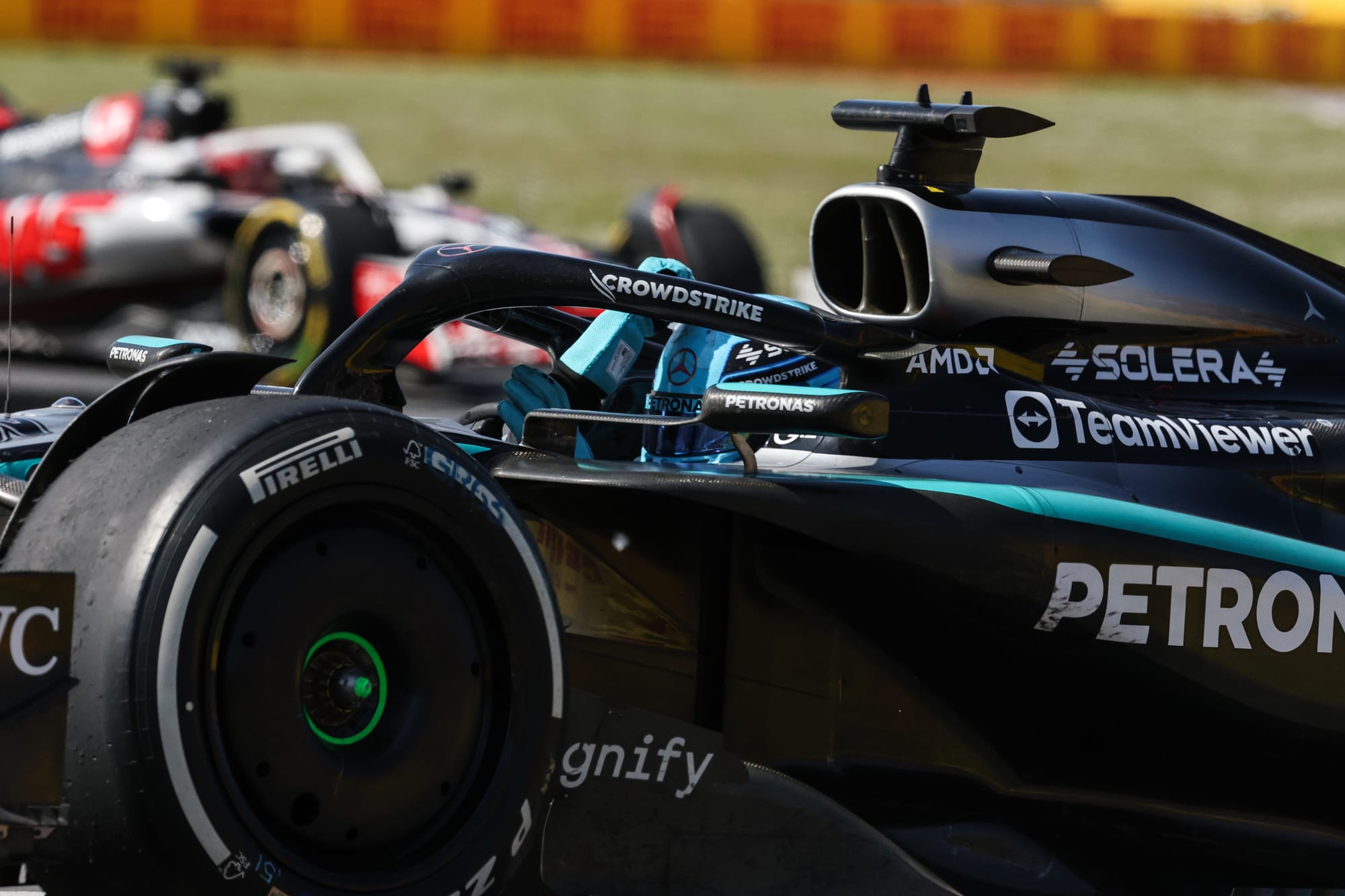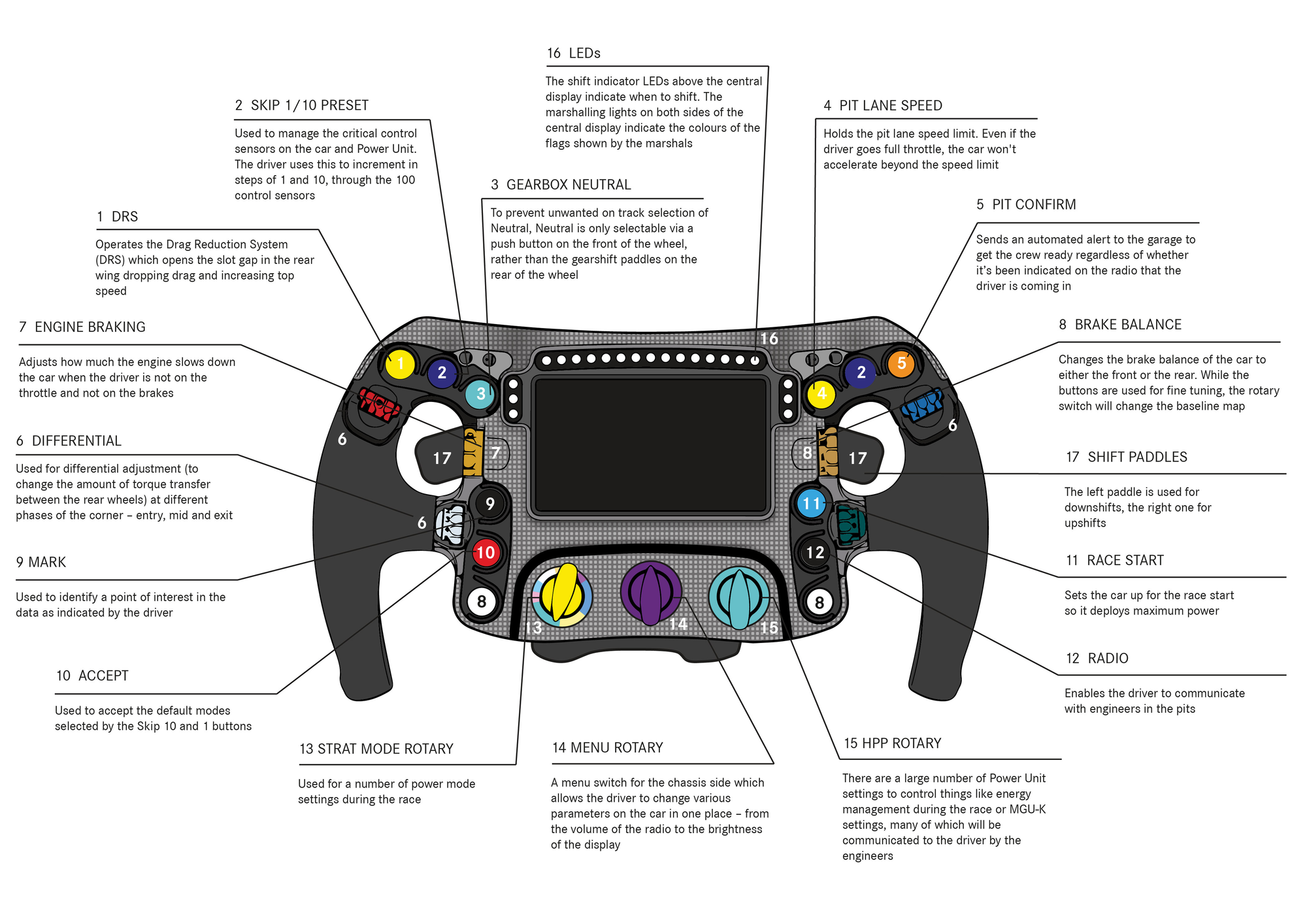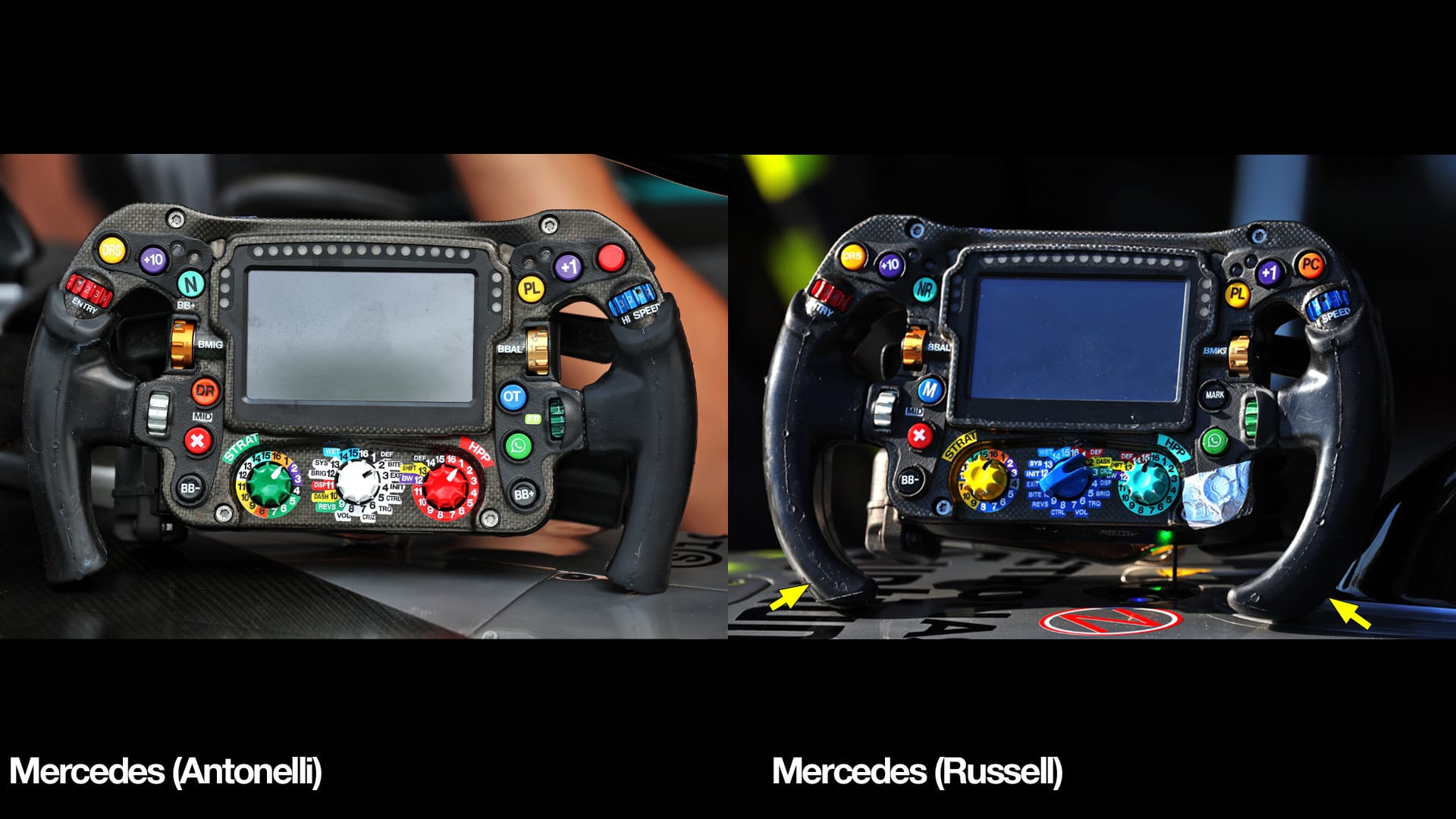One of the most personalised items in a Formula 1 car is the steering wheel; it's well known that teams adjust buttons and paddles so they perfectly suit the demands of the drivers.
But it would be wrong to say that once a driver has a configuration they are happy with, they will then settle on it forever - with steering wheel evolution a constantly changing thing.
It is not just the layout of buttons that gets tweaked, though, with an interesting modification having been made by George Russell at Mercedes this year that highlights how every detail of the steering wheel is up for being refined.
As our photo comparison below shows of the wheel that Russell started the campaign with, and the one he has been spotted using since the start of the European leg of the season, there has been a modification of the grip area.

The lower grip area that Russell holds on to with his palms has been made more circular than it was at the start of the year.
The trigger for this change is interestingly nothing to do with Russell wanting to adjust the feeling he gets through the wheel - instead it is all related to a slightly revised seating position this year that the drivers have in the W16.
With the consequence of the shift of position being that the drivers sit slightly higher than before, Russell found that his knees have been raised more to fit in the cockpit.
As a consequence, with the steering wheel configuration that he had started the year with, he had found that there were times in some corners when he would end up brushing his legs with the end of the steering wheel.
To stop this happening, it was felt that rather than try to move Russell's position in the cockpit to adjust his knee clearance, the easiest solution was to change the profile of the steering wheel grip - with the more rounded end helping with this.
Russell's steering wheel modification shows how decisions made about one design concept - such as the seating position - can have implications on many other car aspects.
Mercedes in particular has been refining the seating position of its drivers in recent years – with Lewis Hamilton notably having complained about it being too far forward in the past.
"When you're driving, you feel like you're sitting on the front wheels, which is one of the worst feelings to feel when you're driving a car," Hamilton said back in 2023.
"What that does is it really changes the attitude of the car and how you perceive its movement. It makes it harder to predict compared to when you're further back and you're sitting closer, more centre. It's just something I really struggle with."
Mercedes duly moved the drivers back by as much as 100mm last season, but further changes to the driver position were also made for this year.
Sticking with what Mercedes knows

While modifications have been made to Russell's steering wheel design this season, it is also notable that the broad layout of control systems has been untouched for a while.
Apart from a few minor button changes - that can even happen race-by-race, depending on the specific demands of an individual weekend - Russell's steering wheel layout is broadly the same as what the team has run for years.
As the below labelling of a Mercedes steering wheel from the start of 2019 indicates, the team has clearly settled on something that works - so there is no need to change it.

Russell's new team-mate Kimi Antonelli uses a wheel that has the same design - but he has tweaked some buttons and has labelled them differently to personalise it more.
This even goes as far as Antonelli and Russell choosing alternative menu configuration with the central rotary - as they use different numbers for control parameters that relate to car aspects that even go as far as tweaking the brightness of the display.

The team has also coloured the strat mode and HPP rotaries in the green, white and red of Antonelli's national flag - while Russell's has traditionally been the same blue as his crash helmet.
Mercedes has also ensured that the position of clutch paddles and gear shifters are perfect for the hand size of each driver.



